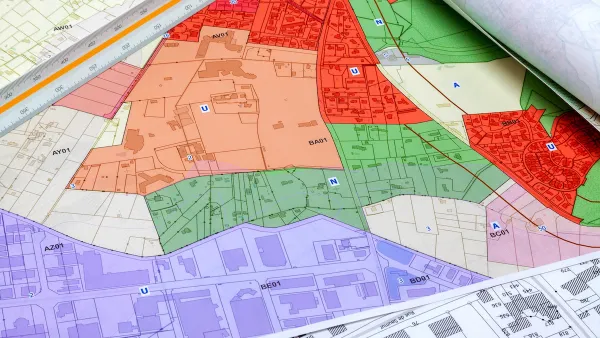The decision vacates a USDOT rule that would have required states to establish emission reduction plans.

A U.S. District Court judge ruled that the U.S. Department of Transportation (USDOT) does not have the authority to issue a recent emissions reduction rule, reports Dan Zukowski in Smart Cities Dive. The lawsuit was brought by the state of Texas. “In a separate lawsuit a group of 21 states filed in Kentucky, the Federal Highway Administration agreed to extend the deadline for states to submit initial CO2 targets and reports until March 29, 2024.”
The argument hinges on Congress’s rejection of a GHG performance measurement when the infrastructure law was first developed, thus “making the Administration’s rulemaking an unlawful attempt to circumvent Congress and force this one-size-fits-all burden upon every state and community across the country,” said Representatives Sam Graves and Rick Crawford in a statement.
Steven Higashide, director of the Clean Transportation Program at the Union of Concerned Scientists, says the rule “adds basic transparency to transportation planning processes that can be hard to understand, and it’s disheartening to see any states fight to make the process more opaque.”
FULL STORY: Texas court strikes down federal rule requiring states to monitor and set targets for highway GHG emissions

National Parks Layoffs Will Cause Communities to Lose Billions
Thousands of essential park workers were laid off this week, just before the busy spring break season.

Retro-silient?: America’s First “Eco-burb,” The Woodlands Turns 50
A master-planned community north of Houston offers lessons on green infrastructure and resilient design, but falls short of its founder’s lofty affordability and walkability goals.

Delivering for America Plan Will Downgrade Mail Service in at Least 49.5 Percent of Zip Codes
Republican and Democrat lawmakers criticize the plan for its disproportionate negative impact on rural communities.

Test News Post 1
This is a summary

Test News Headline 46
Test for the image on the front page.

Balancing Bombs and Butterflies: How the National Guard Protects a Rare Species
The National Guard at Fort Indiantown Gap uses GIS technology and land management strategies to balance military training with conservation efforts, ensuring the survival of the rare eastern regal fritillary butterfly.
Urban Design for Planners 1: Software Tools
This six-course series explores essential urban design concepts using open source software and equips planners with the tools they need to participate fully in the urban design process.
Planning for Universal Design
Learn the tools for implementing Universal Design in planning regulations.
EMC Planning Group, Inc.
Planetizen
Planetizen
Mpact (formerly Rail~Volution)
Great Falls Development Authority, Inc.
HUDs Office of Policy Development and Research
NYU Wagner Graduate School of Public Service





























